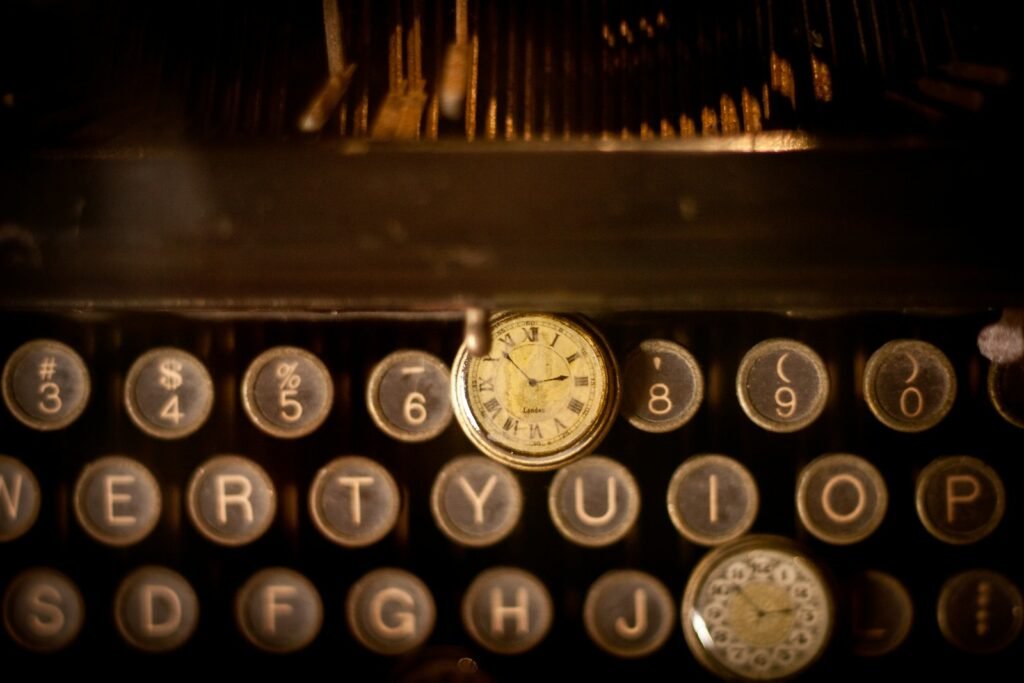
Common Types of Plagiarism
Ah, the realm of plagiarism – a mysterious abyss where numerous unsuspecting sailors find themselves ensnared in a tempest of pilfered words and concepts. Join us on a whimsical journey through this perilous domain as we uncover the various guises of plagiarism that may be lurking around every corner, poised to ambush your innocent composition.
First in line is the “Copy-and-Paste Bandit.” This devious character believes he can effortlessly snatch entire paragraphs or even pages from the boundless expanse of cyberspace and present them as his own creation. As Mark Twain astutely observed, “The man who doesn’t read good books has no advantage over the man who can’t read them.” In this scenario, it’s not ignorance but rather dishonesty that leads to trouble. Remember well, dear student, authenticity is paramount!
Following closely is the “Paraphrasing Pretender.” This sly individual fancies himself capable of transforming another’s work into his own masterpiece by merely tweaking a few words here and there and rearranging sentence structures. However, as Oscar Wilde famously remarked, “Imitation is the sincerest form of flattery that mediocrity can pay to greatness.” While imitation may be flattering elsewhere, academia forbids such practices. So don your thinking cap and let your creative juices flow for it is only your original thoughts that will truly shine bright amidst borrowed ones.
Understanding Proper Citation
Crafting an essay can often seem like unraveling a mysterious code. You delve into endless research, channel your inner wordsmith, and create a work of scholarly art. However, just as you begin to bask in your own brilliance, there is one vital element that must not be overlooked: proper citation.
Citing sources is not merely about avoiding the wrath of plagiarism (though that alone should be motivation enough). It is also a gesture of acknowledging the intellectual property of others and giving credit where it is rightfully due. In the wise words of Oscar Wilde, “I think that God, in creating man, somewhat overestimated his ability.” Let us not fall victim to our own inflated sense of genius and instead remember to scatter those citations throughout our essays like seasoning on a culinary masterpiece.
Tools for Checking Plagiarism
When delving into the realm of plagiarism detection, one may find themselves bewildered by the plethora of tools available at their disposal. One such formidable ally is Turnitin, a powerful resource that scours through your work with relentless fervor, seeking out any semblance of similarity within its vast archives. It acts as a discerning guide, revealing instances where perhaps a touch too much inspiration was drawn from another’s musings. A vigilant companion indeed, always on the lookout for any hint of deceit lurking within your prose.
In addition to Turnitin, there exists Grammarly’s own plagiarism checker – a tool both cunning and insightful in its approach. Not content with merely flagging potential instances of plagiarism, it goes above and beyond by offering guidance on how best to attribute sources and cite references with precision and finesse. Like an erudite comrade standing steadfast by your side, ensuring that you navigate the treacherous waters of citation without faltering or misstep.
Embrace these tools as invaluable aids in preserving the integrity and authenticity of your writing; let them serve as stalwart guardians against the perils of inadvertent imitation. Stay sharp, stay vigilant let your words resonate with clarity and originality under their watchful gaze.
Paraphrasing Techniques
Paraphrasing goes beyond mere word swaps – it’s a nuanced craft, a talent that can either elevate or diminish the creativity of your writing. Picture it as giving a vintage car a fresh coat of paint. You aim to preserve its essence while providing a modern touch. To ace paraphrasing, immerse yourself in the original text, allowing it to simmer in your mind like rich coffee. Then, rephrase it in your own style, akin to giving a Shakespearean play a contemporary twist. This isn’t just about rearranging words; it’s about infusing your unique flair into the masterpiece.
Consider this analogy: paraphrasing is akin to remixing a hit song. You retain the memorable hooks and lyrics but add your personal touch. Similar to how DJs create new tracks from existing beats, you’re blending the original content with your distinct ideas. So embrace your inner DJ and start mixing those words! Mastering paraphrasing will make your essays shine brighter than disco ball at a ’70s dance party!
How to Reference Sources Correctly
Referencing your sources in an essay is akin to acknowledging the rightful owners of knowledge it’s a customary gesture in the realm of academia. Imagine indulging in a delectable cake without having a clue about the masterful baker responsible for its creation. Thus, scatter those citations liberally throughout your paper like vibrant confetti at a jubilant gathering, honoring the luminaries who have influenced your own ideas.
When it comes to citing your sources accurately, envision yourself as a sleuth unraveling clues to bolster your argument. Similar to Sherlock Holmes assembling clues, your in-text citations and bibliography form a trail leading back to the brilliant minds that have left their mark on your work. Recall Oscar Wilde’s words: “Imitation is the sincerest form of flattery that mediocrity can pay to greatness.” Embrace showcasing your sources openly it signifies reverence for the intellectual behemoths who have paved the way for you.
Tips for Avoiding Accidental Plagiarism
Accidental plagiarism, a sneaky culprit that can catch even the most diligent writers off guard, often leads to feelings of panic and frustration. One must always remember to give credit where it is due, as emphasized by writer and humorist Mark Twain who famously quipped, “I don’t give a damn for a man that can only spell a word one way.” When in doubt, it’s best to cite it out!
Furthermore, adopting the habit of meticulously checking your sources can serve as a shield against falling prey to accidental plagiarism. As noted by technology pioneer Steve Jobs, “Details matter, it’s worth waiting to get it right.” Investing extra time in verifying references and citations can significantly impact the integrity of your work. Academic honesty should always take precedence – better safe than sorry!
Importance of Originality in Essays
When delving into the realm of essay writing, originality acts as a mysterious elixir that elevates your work above the mundane sea of scholarly papers. Picture yourself wading through a stack of essays where each one seems like a mere echo from the vast expanse of the internet – a tedious affair indeed. Your distinct voice, innovative viewpoints, and imaginative concepts breathe vitality into your prose. As Agnes Repplier astutely remarked, “Originality is akin to the delicate art of recalling what you’ve heard while forgetting its origins.”
View your essay as an opportunity to shine brightly, allowing your brilliance to captivate your audience. It may be tempting to yield to the seductive allure of shortcuts – a bit of copying here, some pasting there. However, bear in mind Mark Twain’s wise words: “All ideas are recycled, consciously or subconsciously derived from myriad external sources, then jumbled and fused anew.” So why not seize those notions, mix them up in your distinctive manner, and craft something entirely novel and enthralling? Your essay serves as a blank canvas awaiting the vibrant hues emanating from your intellect; do not adorn it with another’s borrowed palette.
Consequences of Plagiarism
Oh, the perplexing aftermath of plagiarism! It’s akin to engaging in a peculiar game of mimicry with no reward awaiting at the finish line. If you happen to be exposed, it won’t simply be a stroll in the park- it will feel more like navigating through a chaotic minefield at breakneck speed. Your credibility will suffer a blow, and let me assure you, rectifying it will not be a straightforward task. Recall the wise words of Benjamin Franklin: “It takes many good deeds to build a good reputation, and only one bad one to lose it.” Therefore, proceed with caution, my dear companion.
And let us not overlook the academic consequences! Your grades could plummet from soaring heights to rock bottom quicker than you can say ‘lead balloon’. As Mark Twain humorously remarked: “I have never let my schooling interfere with my education.” However, when it comes to plagiarism, it can certainly hinder your educational journey. Educators are not too thrilled about students resorting to copying and pasting their way through assignments. Thus, steer clear of the treacherous pitfalls of plagiarism, and you’ll express gratitude towards yourself in due course.
Strategies for Organizing Research Material
Entering the realm of research projects can be a daunting plunge into an ocean of knowledge, devoid of any safety net. Yet fear not, for there exists a beacon of hope in the form of astute organization techniques. One particularly ingenious method involves crafting a system where your notes are color-coded envision it as your very own kaleidoscopic guide through the labyrinthine expanse of research. As the venerable Benjamin Franklin once imparted, “By failing to prepare, you are preparing to fail.” Therefore, seize those vibrant markers and prepare to unveil your latent mastery over organization!
Furthermore, an additional shrewd tactic entails harnessing digital resources to maintain order amidst the chaos of research materials. Applications such as Evernote or Google Keep serve as invaluable aids in storing and arranging your notes, articles, and references. It’s akin to having a virtual aide who never grumbles about sorting paperwork! In accordance with the adage that “It is not technology itself that matters; it is whether you trust people,” place your faith in technology as a steadfast companion on your journey through the tumultuous seas of research organization.


